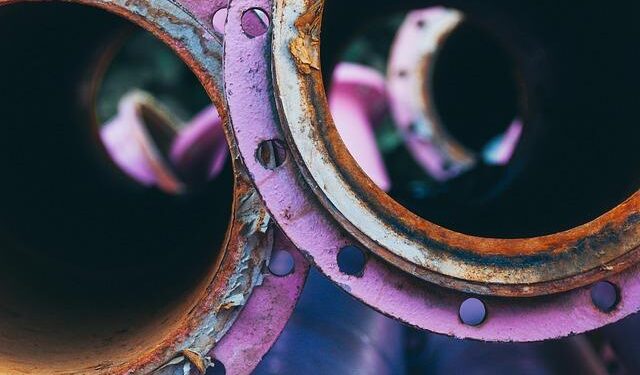Archaeologists have uncovered a remarkable Iron Age village in the Czech Republic, shedding new light on early European settlements. The excavation, conducted by a team of Czech and international researchers, reveals well-preserved structures and artifacts that offer fresh insights into the daily lives, social organization, and cultural practices of Iron Age communities in the region. This discovery, detailed in the latest issue of Archaeology Magazine, promises to deepen our understanding of prehistoric Europe and its complex history.
Iron Age Village Unearthed in Czech Republic Sheds Light on Ancient Settlements
Archaeologists in the Czech Republic have uncovered a remarkably well-preserved Iron Age village, revealing new insights into the daily lives and social structures of ancient communities in Central Europe. The excavation site, located near the Moravian region, contains the foundations of roundhouses, storage pits, and hearths dating back over 2,500 years. This discovery offers a rare glimpse into the agricultural practices, craftsmanship, and settlement patterns that defined the period, highlighting the villagers’ adaptability and technological skills amid changing environmental conditions.
Among the notable findings are a variety of artifacts, including ceramic pottery shards, iron tools, and rare ornamental items that suggest complex trade networks and cultural exchanges. The site also features early examples of iron smelting, providing valuable evidence of metallurgical advancements. Key elements uncovered at the site include:
- Residential structures: Circular wooden frames with clay reinforcement
- Food storage: Underground pits lined with straw to preserve grain
- Craft production: Workshop traces indicating textile weaving and toolmaking
| Feature | Description | Date (approx.) |
|---|---|---|
| Roundhouse Foundation | Wooden structure bases, 6 meters diameter | 450 BCE |
| Iron Smelting Furnace | Early metallurgical installation | 430 BCE |
| Storage Pit | Grain preservation, lined with organic materials | 450 BCE |
Archaeological Discoveries Reveal Daily Life and Social Structure of Early Inhabitants
Excavations at the Iron Age site in the Czech Republic have unearthed a remarkably well-preserved village, shedding light on the daily routines and hierarchical dynamics of its early inhabitants. Researchers uncovered a wealth of artifacts including pottery fragments, tools, and remnants of domestic structures, suggesting a community deeply engaged in agriculture, craftsmanship, and trade. Evidence points to carefully organized living spaces with distinct zones for cooking, storage, and social gatherings, reflecting a sophisticated approach to village planning.
Key findings from the site include:
- Handcrafted ceramics exhibiting decorative patterns unique to the region
- Bronze and iron tools indicating advances in metallurgy
- Animal bones revealing dietary preferences and seasonal hunting practices
- Community structures suggesting social stratification, such as larger houses possibly reserved for local leaders
| Artifact Type | Quantity Found | Inferred Use |
|---|---|---|
| Pottery Fragments | 350+ | Food storage and preparation |
| Metal Tools | 45 | Farming, crafting, hunting |
| Animal Bones | 120+ | Diet and ritual purposes |
| Housing Remains | 27 | Residential and communal use |
Experts Advocate for Enhanced Preservation and Further Excavations at the Site
Specialists in the field stress the critical importance of safeguarding the newly uncovered Iron Age site to ensure that invaluable cultural insights are not lost to natural erosion or human interference. They emphasize the need for a structured conservation plan that includes weather protection, controlled access, and ongoing site maintenance. Preservation efforts must work hand-in-hand with scientific exploration to balance public engagement and research, ensuring the site remains a rich educational resource for future generations.
Furthermore, experts call for expanded excavation campaigns to deepen understanding of the settlement’s social, economic, and technological dynamics. They propose several key initiatives:
- Targeted digs to uncover residential structures and communal spaces
- Advanced remote sensing technology to identify subsurface remains without damaging the site
- Interdisciplinary collaboration incorporating archaeobotany, zooarchaeology, and material science
- Community involvement programs to promote local stewardship and awareness
| Focus Area | Expected Outcome | Proposed Timeline |
|---|---|---|
| Structural Excavation | Detailed mapping of dwellings | 2 years |
| Artifact Analysis | Insight into trade and daily life | Ongoing |
| Site Preservation | Long-term protection | Continuous |
Future Outlook
As excavations continue at the Iron Age village site in the Czech Republic, archaeologists anticipate uncovering further insights into the daily lives and cultural practices of its ancient inhabitants. This discovery not only enriches our understanding of Iron Age Europe but also underscores the importance of continued archaeological exploration in the region. Stay tuned to Archaeology Magazine for updates on this significant find and other developments in the field.
















